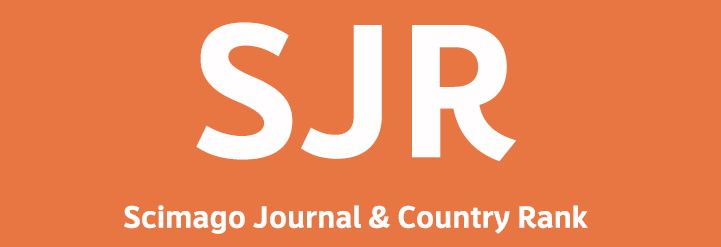ANALYSIS ON LINKAGE AND MULTIPLIER EFFECTS OF UPSTREAM OIL AND GAS SECTOR IN INDONESIA'S ECONOMY USING INPUT-OUTPUT METHOD
DOI:
https://doi.org/10.29017/scog.v48i1.1700Keywords:
Linkage, Multiplier Effect, Index, Upstream Oil and Gas Sector, Indonesia’s Economy, Input-OutputAbstract
The aim of this study is to analyze the role of the upstream oil and gas sector within Indonesia's economy in terms of its linkage to other sectors and the multiplier effect it produces. The input-output (IO) analysis method is applied by calculating the total, backward, and forward linkage index and multiplier effect index values of the upstream oil and gas sector. Building upon a previous study using the 2005 BPS IO Database updated in 2010 (2005 IO), this study used the 2010 IO Database released by BPS in 2015 (2010 IO) and the 2016 IO Database released in 2021 (2016 IO), processing the data using Python-based software. Based on the calculation using 2010 IO Database, there were 93 sectors with linkage to the upstream oil sector and 104 with linkage to the upstream gas sector, whereas the 2016 IO Database identified 96 sectors with linkage to the upstream oil sector and 113 with linkage to the upstream gas sector. Simulated calculation and analysis results revealed that there was an increase in total (backward and forward) linkage index values of the upstream oil and gas sector, from 3.8801 to 4.0826 for the upstream oil sector and from 3.1256 to 3.3940 for the upstream gas sector. In regard with multiplier effect, simulated calculation results also pointed towards an increase in total multiplier index values, from 6.1855 to 7.8943 for the upstream oil sector and from 4.9828 to 6.5630 for the upstream gas sector. The increase in total multiplier index in the national upstream oil and gas sector correlates with an increase in linkage between the upstream oil and gas sector and other sectors in Indonesia's economy as a whole, both backward and forward. Analysis results showed that the greater the multiplier index reported by a sector with linkage to the upstream oil and gas sector, the greater the total multiplier index produced in the upstream oil and gas sector.
References
Ainuddin & Muhammad A.S., 2021, Oil and Gas in
the Dynamics of Time and Development. Journal
of Scientific Contributions Oil & Gas, Vol. 44.
No. 2, August 2021: 153 - 159. Doi: https://doi.
org/10.29017/SCOG.44.2.590.
Bauman, Dismukes, Mesyanzinov and Pulsipher,
2002, Analysis of The Economic Impact
Associated with Oil and Gas Activities on State
Leases, LSU Center for Energy Studies.
BPS, 2015, Tabel Input-Output Indonesia 2010.
Jakarta: BPS.
BPS, 2021), Tabel Input-Output Indonesia 2016.
Jakarta: BPS.
BPS, 2024, PDB Menurut Lapangan Usaha. Jakarta:
BPS.
Kothari, C.R., 2004, Research Methodology.
Methods and Techniques. New Age International
(P) Limited Publishers.
Leontief, W.W., 1986, Input-Output Economics,
Second Edition. New York: Oxford University
Press Inc.
Mardiana, D.A., et al, 2024, Petroleum Fiscal
Attractiveness in Indonesia, Malaysia and
Thailand: Application on Offshore Project
Development. Journal of Scientific Contributions
Oil & Gas, Vol. 47. No. 3, December 2024:
265 – 276. Doi: https://doi.org/10.29017/
SCOG.47.3.1633
Notonegoro, K., 2013, Analisis Input-Output
dan Simulasi Kebijakan Sektor Energi dalam
Perekonomian Nasional. Universitas Trisakti
Partowidagdo, W., 2009, Migas dan Energi di
Indonesia. Development Studies Foundation,
Bandung.
Perwitasari, H & Sari, N., 2013, Analisis Input-
Output Komoditas Kelapa Sawit di Indonesia.
Jurnal IImu Pertanian, 9(1), 11–21.
Rakhmanto P.A., 2024, Defisit dan Kebijakan Harga
Gas Nasional. Investor Daily, 26 Agustus.
ReforMiner Institute (2011). Studi Analisis Kontribusi
216
Scientific Contributions Oil & Gas, Vol. 48. No. 1, April 2025: 207 - 216
| DOI.org/10.29017/scog.v48i1.1700
Ekonomi dan Efek Multiplier Industri Hulu Migas
dalam Perekonomian Nasional. Unpublished.
ReforMiner Institute, 2013, Migas, Perbankan dan
Perekonomian Nasional. Sinergisitas Hulu Migas
dan Perbankan Nasional. ReforMiner Institute,
Jakarta.
Stern, D.I., 1999, Energy and Economic Growth
in the USA: A Multivariate Approach. Energy
Economics. Vol. 15, Issue 2, hlm 137-150.
Sumardjoko, I., 2013, Analisis Pengaruh Transfer
ke Daerah Terhadap Pertumbuhan Ekonomi
Regional Papua Sebagai Upaya Penguatan
Desentralisasi Asimetri. Universitas Airlangga.
Sunarjanto, D. et al, 2017, Manfaat Ekonomi dan
Lingkungan dari Kegiatan Migas Teluk Bintuni,
Propinsi Papua Barat. Lembaran Publikasi
Minyak dan Gas Bumi (LPMGB). Vol. 51,
No.3, Desember 2017: 1 – 7. DOI: https://doi.
org/10.29017/LPMGB.51.3.24.
Weisbrod, G., 2017, Economic Impact Tools and
Models: Are They Useful? EDR Group.
West, G.R. & Jensen, R.C., 1980, The effect of
Relative Coefficient Size on Input-Output
Multipliers. Environment and Planning A:
Economy and Space, 12(6).
Yusgiantoro, P. & Luky, Y., 2018, Ekonomi Energi
Teori dan Aplikasi. Purnomo Yusgiantoro Centre,
Jakarta.
Downloads
Published
Issue
Section
License
Copyright (c) 2025 © Copyright by Authors. Published by LEMIGAS

This work is licensed under a Creative Commons Attribution 4.0 International License.
Authors are free to Share — copy and redistribute the material in any medium or format for any purpose, even commercially Adapt — remix, transform, and build upon the material for any purpose, even commercially.
The licensor cannot revoke these freedoms as long as you follow the license terms, under the following terms Attribution — You must give appropriate credit , provide a link to the license, and indicate if changes were made . You may do so in any reasonable manner, but not in any way that suggests the licensor endorses you or your use.
No additional restrictions — You may not apply legal terms or technological measures that legally restrict others from doing anything the license permits.














